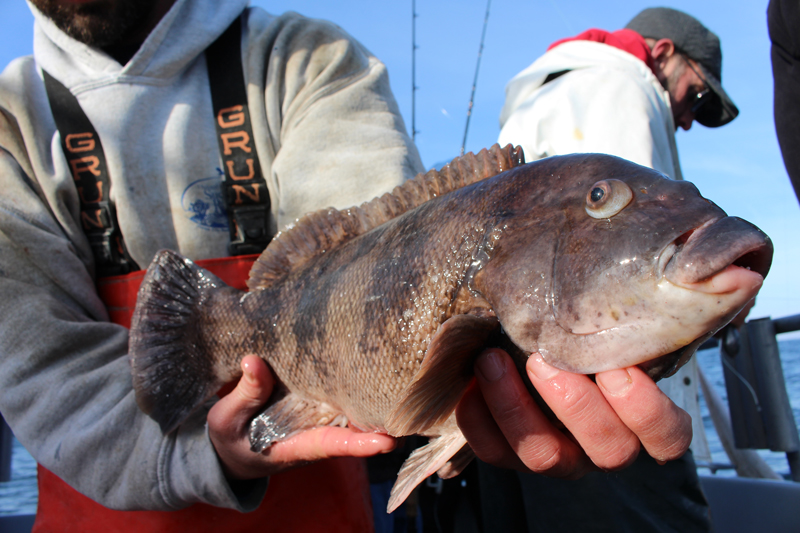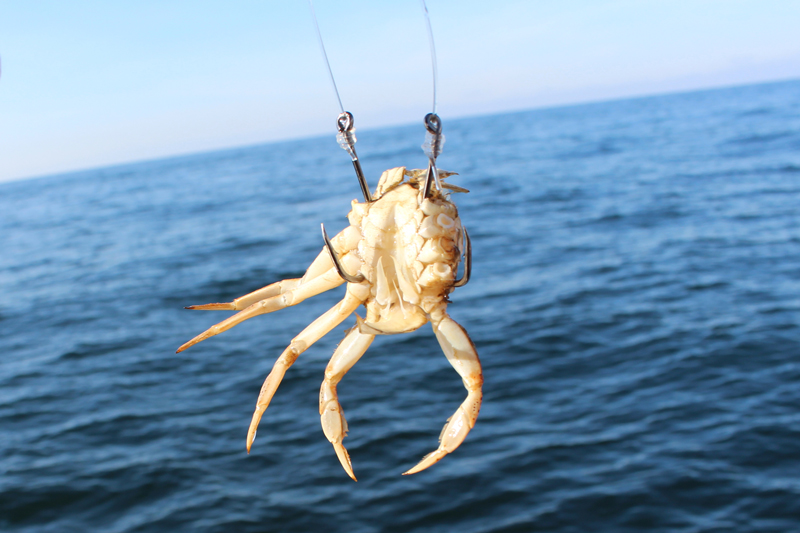Good winter bites can be tough to come by for a Mid-Atlantic angler, but one species we can always rely on to keep our rods bent during the frigid months is tautog... Not! Truth be told, tog are quite temperamental and they can bite fast and furious one day, then seem to be completely MIA the next. Reliable is definitely not a word an experienced togger would use lightly when describing these fish. That said, if you want to bend a rod on a serious saltwater fighter when snow is falling and there’s skim ice in the marina, tog are the ticket. Use these 10 tips to help get more of ‘em on the line.

- Don’t start fresh with zero experience and take a stab at these fish on your own. They require specific rigging, tackle, baits, and techniques, and you don’t just “get lucky” with this fish. Wise anglers will take a trip or two with a pro and get their toggin’ feet wet before they strike out on their own. If you don’t have a buddy who’s experienced with tog, there are several party boats and charters that will run for them all winter long (mostly out of Ocean City and Virginia Beach). Also be sure to punch “tautog” into the search box here on our website to gain additional intel and insight.
- Don’t allow your weight to bounce on the bottom. Tog are deterred by a moving bait and a bouncing weight, and hit a lot better when you rest your offering on the bottom and leave it there.
- Keep your rod in your hands, not a rodholder. When these fish eat you need to set the hook firmly and immediately, or they’ll suck the meat right out of your offering and then spit the shell bits — and the hook — right back out of their mouths.
- Set your drag as heavy as you dare, and the moment you get a fish on the line apply maximum pressure. Tog are famous for darting into a hidey-hole the moment they feel threatened, and if you don’t pull them away from the structure quickly, the fish are likely to tangle your line in a snag or pull it across a sharp edge.
- Stick with sand fleas or fiddler crab in the bays and inlets, and go to green or white crab in oceanic waters. Truth be told tog will hit just about any sort of crustacean bait, but these top the list for most savvy tog fishermen and matching the inshore versus offshore hatch is a good move.
- Use a whole crab to target monster tog off the coast, but if you keep losing baits without hooking up, switch to a crab chunk or half-crab. Fish under four or five pounds may have a tough time getting their mouth around the whole crab (but the real monsters definitely enjoy being served up the entire meal).
- Before sending a crab into the depths sit it on something firm, and use your sinker to crack up its back-shell. This will allow more fish-attracting scents to ooze out and bring in the tautog.
- Your baits need to be right in and on the structure. If you’re in a boat and you aren’t anchored perfectly over the wreck or reef, take the time to reposition. And if you’re fishing inlet rocks or bridge pilings, get those offerings just as close to the structure as possible.
- Bring lots of spare rigs — see above. Yes, fishing directly in the cover you will have lots of snags when tog fishing. Don’t let it frustrate you, because that’s all part of the game and is to be expected. You can lessen the blows a bit by attaching your sinker to the rig with a piece of relatively light leader, so you can break it off when need be. Most of the snags are the sinker, not the hooks, so if you’re willing to sacrifice some lead you can do a bit less re-rigging.
- When you realize you just had a bite a fraction of a second too late to set the hook, don’t wait long before reeling in to check your bait. Nine times out of 10 it will be gone, so waiting for a follow-up strike is almost always a waste of time.

Okay: are you ready to set your sights on tog fishing this winter? Remember, this is no easy gig. But if you gain some experience, pay attention to the details, and put in your time, you could be catching these fish all winter long.